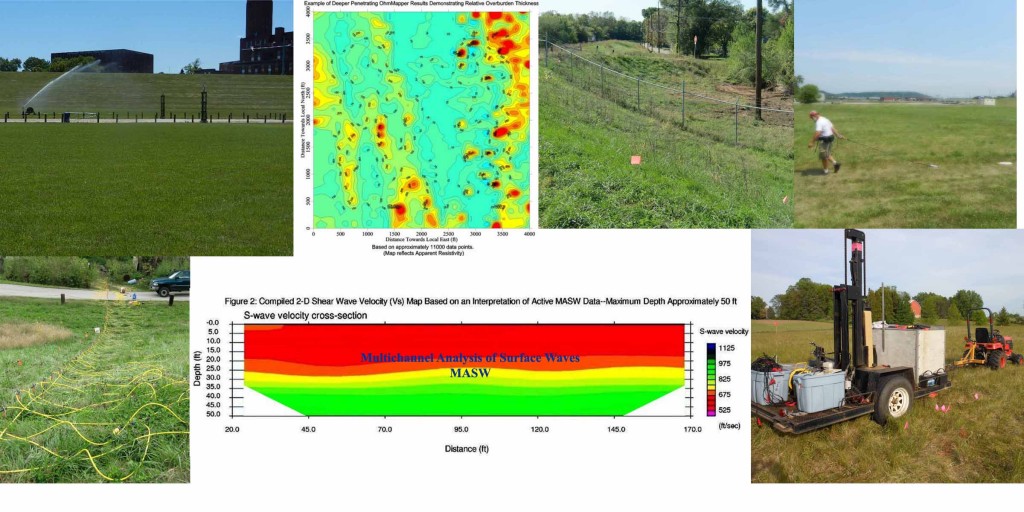Help with a levee certification needing geophysics
or finding geophysical instruments
is available. Click here to go to a geophysicist or here to rent geophysical equipment.
Engineering geophysical methods can assist in the certification of a levee.
A levee design often incorporates geophysics when building a levee.
Levees control the flow of water and assist with limiting flooding. A well designed and maintained levee will have a life expectancy much greater than the people who constructed the levee. A poor levee design or unmaintained levee can lead to levee breaks and levee failure. The effects of large storms like hurricane Katrina and hurricane Sandy can exceed the engineered design of a levee. Since the construction of a levee may include soils, rock, concrete, and other man made materials it is important to review the condition and effectiveness of the these materials throughout the life of a levee. Freeze-thaw, storms, and the flow of water are destructive forces that can erode and eventually compromise the integrity of a levee. The US Army Corps of Engineers Levee Safety Program provides information about levees in the U.S. The program states that “The approximate 2,000 levee systems, comprising roughly 14,000 miles of levees currently in the USACE Levee Safety Program may only represent a small fraction of the estimated 100,000 miles of the nation’s levees.” Over time, living behind a levee that is not up to current standards can lead to a false sense of security.
Local levee owners or sponsors are responsible for obtaining levee certification and accreditation.
These documents are utilized by the National Flood Insurance Program NFIP to assist with providing flood insurance.
The US Army Corps of Engineers’ USACE methods and information may be used by the NIFP. The USACE Manual No. 1110-2-1913 30 April 2000 DESIGN AND CONSTRUCTION OF LEVEES provides a wealth of basic principals for levee design and levee construction. It points out that levees can be “dictated primarily by flood protection requirements, which often results in construction on poor foundations,” and the soils used to construct the levee or “borrow is generally obtained from shallow pits or from channels excavated adjacent to the levee, which produce fill material that is often heterogeneous and far from ideal.” These less than ideal conditions can lead to under-seepage, through seepage, slope instability, settlement, and poor trafficability of the levee surface.

For help today, fill out aLevee.Com’s form on the contact page.
Geophysics plays an important role in characterizing a levee’s geology.
It is necessary to have an understanding of the local geology
to avoid future issues. The placement, condition, and type of bedrock and the distribution of soils and fill material within and around the levee relate to the performance of a levee. Engineering geophysics and geophysical methods assist with characterizing soils, bedrock, paths of preferential flow within soils, fill material, voids, jointing, fracturing, faulting, engineering soil properties, hydrogeology, and potential groundwater contamination. Electrical earth resistivity, seismic, electromagnetic, ground penetrating radar GPR, magnetic, and borehole methods are capable are used during geophysical characterizations. Services are often provided by a geophysical consultant. The five broad areas of geophysics can target areas of concern by utilizing specific geophysical survey techniques (e.g., multi-electrode resistivity, multichannel analysis of surface waves MASW, capacitance coupled resistivity, or electromagnetic terrain conductivity). See additional details about specific geophysical methods at Types of Engineering Geophysical Surveys
